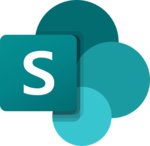While all document management systems digitize and organize documents, making them easy to retrieve or revise for users with permission, many other features might be built into your document management software. Here's a look at some of the tools and aspects you might want to consider when choosing a document management system.
Usability
One of the most important elements of any software is usability. It could offer all the features in the world, but they won't do you any good if the system isn't user-friendly. Many document management systems offer free trials that allow you to test them before buying. If possible, allow your team to try out the software during the free trial period and offer their feedback on what they like and dislike about it.
Document Sharing and Collaboration
While the primary function of a document management system is to digitize and organize files, most modern software also allows users to share files with one another and collaborate on editing them. Some document management software allows users to edit a document simultaneously, while others rely on a check-in/checkout feature that guarantees only one user can work on a document at a time. Others offer both options.
Version Control
Version control, sometimes referred to as "versioning," is a critical feature of document management software that lets you keep track of changes to a document. The best document management software even maintains an archive of old versions, letting you see how documents have changed over time and revert to an old version if needed.
Image Scanning and OCR
Image scanning and optical character recognition are useful features for businesses that have a lot of paper records they would like to digitize. Scanning is the first step – turning a paper record into a digital file that can be imported into the software. OCR is a more advanced feature, but it's a must-have for streamlining large digitization projects. OCR reads the text of an image and makes the content of the image searchable. The best document management systems use OCR to automatically fill out metadata and make it even easier to search for the document later.
Electronic Signatures
Document management software is often home to files that require a manager's signature, such as purchase orders. Many document management systems integrate with an e-signature tool, such as DocuSign, to allow electronic signatures. You can often send a document to a recipient with a request for their signature through the software.
Workflow Automation
Workflow automation features move tasks along automatically. Take the purchase order above as an example: You could set up a workflow automation so that once a purchase order is generated, it automatically goes to the appropriate manager for their signature. The manager will receive a notification, and when the task is complete, the next relevant team member (such as someone in the accounting department or the manager's supervisor) will be notified. If more action is necessary, you might be able to build that into the automated workflow as well. The best document management systems allow you to customize workflows to suit the way your teams work together.
 FYI: Automated workflows can help streamline your business processes and maintain legal compliance.
FYI: Automated workflows can help streamline your business processes and maintain legal compliance.
User Permissions
An essential element of document management software is the ability for administrators to set individual user permissions. Permissions allow certain users to view or edit files, while others can be prevented from even seeing those documents in the system. Not only is this useful for efficiency purposes, it is also an important security measure. The best document management software allows administrators to set permissions by specific groups, as well as to change permissions on the fly if you need to make an exception while keeping the default permissions settings the same.
Mobile Functionality
In today's business environment, mobile device access is essential. Many document management systems have a dedicated mobile app. Others rely on web browsers or online portals. Make sure the mobile version of any document management software you are considering is truly mobile-friendly. Even if you personally don't use it on mobile devices, it is likely other members of your team will.
Not every document management system checks all these boxes, while others offer all of them and more. When choosing your document management software, consider which tools and features would be most useful to your business. It is important to strike a balance between comprehensiveness and usability; for instance, some systems can do it all but are a challenge to navigate (not to mention more expensive than simpler software).
Data Security
Data security is a vital part of any document management system. In 2019, reports TechRepublic, the number of breaches increased by 54%, 89% of which were outside attacks.
As an increasing number of businesses go digital, more customers are entrusting sensitive personal information to the companies they do business with. Your organization is responsible for ensuring customer data is safe and protected from a breach. Look for document management services that offer encryption and compliance tools, auto-updates, data redundancy and backups.








 Key takeaway: Cloud-based document management software typically costs between $15 and $200 per user per month. The price varies on how many features and tools you want access to.
Key takeaway: Cloud-based document management software typically costs between $15 and $200 per user per month. The price varies on how many features and tools you want access to. Did you know? Organizations can lose
Did you know? Organizations can lose  FYI: Automated workflows can help streamline your business processes and maintain legal compliance.
FYI: Automated workflows can help streamline your business processes and maintain legal compliance.


